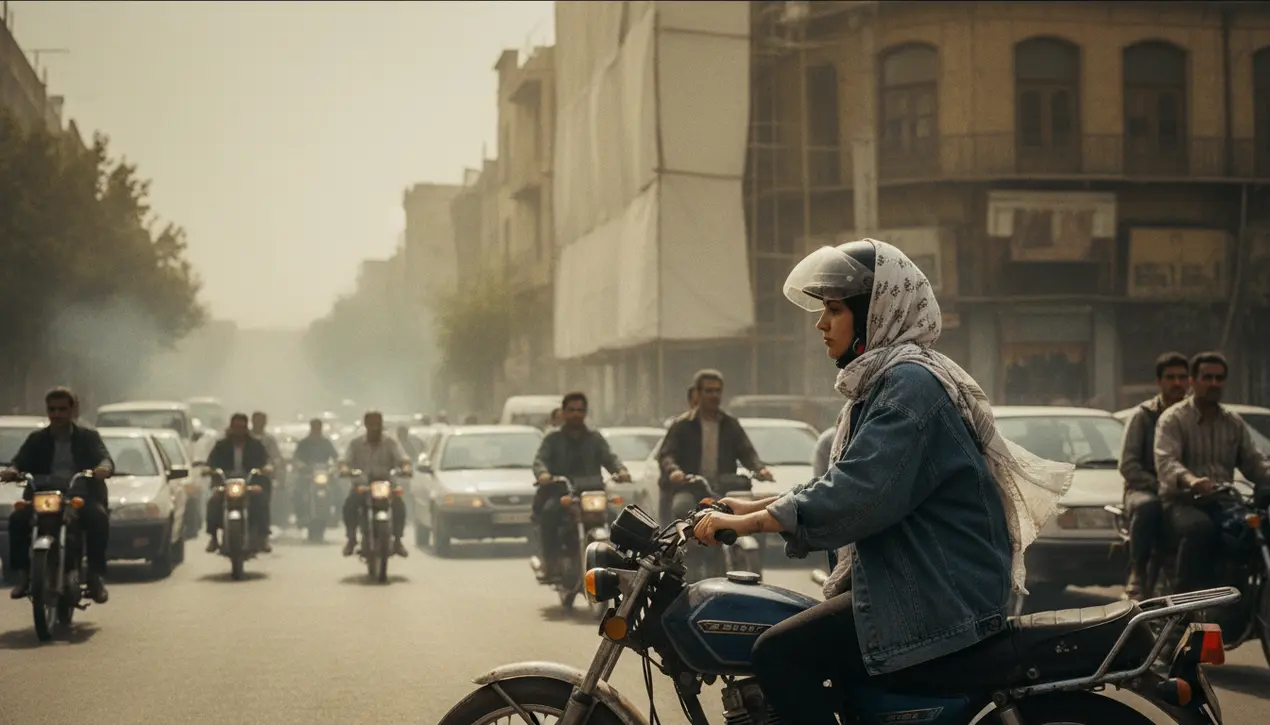
Politicsprotests & movements
More Women in Tehran Challenge Norms by Riding Motorbikes
AN
Anna Wright
2 hours ago7 min read1 comments
On the congested, fume-choked avenues of Tehran, a quiet but potent revolution is rolling forward on two wheels. More women are mounting motorbikes, a simple act of mobility that, within the intricate tapestry of Iranian society, constitutes a profound political statement.This is not merely a matter of transportation; it is a direct confrontation with a legal and cultural framework designed to circumscribe women's presence in public space. The sight of a woman, her hijab secured against the wind, navigating traffic with a determined grip on the handlebars, is a powerful visual rebuttal to the state's mandate of modesty and the patriarchal norms that have long dictated where women can go, how they can get there, and who they can be.This movement, growing steadily despite the very real risks of official harassment and social censure, is a vivid barometer of the shifting attitudes toward women's freedom in Iran, a testament to a resilience that has been forged in the fires of decades of systemic repression. The legal barriers are formidable.While not explicitly forbidden by statute, women riding motorcycles operates in a grey area heavily policed by morality enforcement units. The authorities often cite 'public safety' or 'improper hijab' as pretexts for stopping and fining female riders, a discretionary power that creates a constant atmosphere of intimidation.Culturally, the act challenges deep-seated conventions about femininity and propriety; a woman astride a powerful machine is an image of autonomy that disrupts traditional gender roles. Yet, this is precisely why the phenomenon is so significant.It follows in the courageous footsteps of the 'Girls of Revolution Street' who, years ago, stood on utility boxes, silently waving their headscarves on sticks, and more recently, the Woman, Life, Freedom uprising that shook the nation's foundations. The motorbike has become the latest platform for this enduring struggle, a mobile extension of the demand for bodily autonomy and the right to the city.For these women, the bike is more than metal and engine; it is an instrument of emancipation, offering a tangible sense of control and independence in a society that systematically denies them both. They are navigating not just physical roads, but the precarious landscape of their own rights, each journey a small but defiant act of reclaiming public space.The international community, particularly human rights organizations and feminist groups observing from Europe and North America, view this trend as a critical indicator of civil society's vitality in Iran. The consequences are multilayered.On one hand, every successful ride normalizes female presence in a traditionally male-dominated sphere, incrementally expanding the boundaries of the acceptable. On the other, it invites backlash from hardliners who see any assertion of female independence as a threat to the social order.The women riders of Tehran are not a monolith; they are students, professionals, mothers, each with her own story, united by a shared desire for a simple, yet radical, freedom: the freedom to move. Their continued presence on the streets, despite the barriers, is a powerful, rolling testament to the fact that the quest for liberty cannot be legislated away or culturally shamed into silence. It finds a way, sometimes on four wheels, sometimes on two, always moving forward.
#women's rights
#Iran
#Tehran
#motorbikes
#cultural barriers
#protests
#featured
Stay Informed. Act Smarter.
Get weekly highlights, major headlines, and expert insights — then put your knowledge to work in our live prediction markets.
Comments
Loading comments...
© 2025 Outpoll Service LTD. All rights reserved.